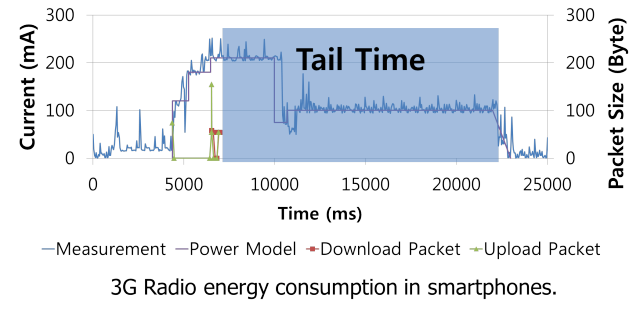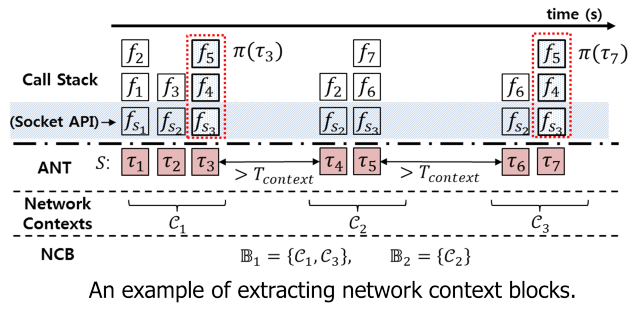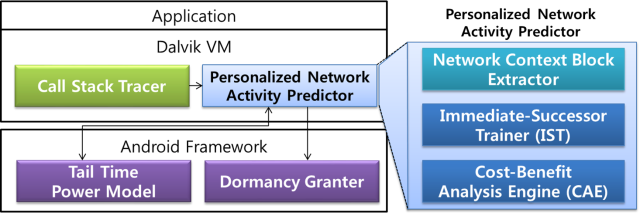1. Introduction
- A significant portion of the high radio energy consumption in smartphones comes from the energy wasted during a special interval, known as the tail time
 - The fast dormancy protocol enables a radio module to quickly release its radio connection even in tail times
- The fast dormancy protocol enables a radio module to quickly release its radio connection even in tail times
- It is a challenge to predict whether (or when) a subsequent data transmission will occur in the tail time
- What the existing techniques lack is a systematic and automatic way of extracting meaningful user-level network activities from a running app2. Network context
2. Network Context
- Network Context
- Clustered network data transfers initiated from socket API functions (available from Dalvik VM)
- Network Context Block (NCB)
- Group of network contexts to perform semantically similar network activity (equivalent execution path)
3. Smartphone network usage
- NCB has persistent unique characteristics for transmission trend in the tail time
- Different users behave quite differently even for the same network context
4. Personalized diapause (PD)
- Immediate-Successor Trainer: construct a skewed Tail Utilization Rate distribution model for each NCB
- Cost-Benefit Analysis Engine: determine when to invoke the fast dormancy feature considering the cost-benefit adaptive tradeoff
5. Published paper
Yeseong Kim and Jihong Kim, "Personalized Diapause: Reducing Radio Energy Consumption of Smartphones by Network-Context Aware Dormancy Predictions ," Workshop on Power-Aware Computing and Systems (HotPower '12) in conjunction with OSDI 2012, Hollywood, USA, October 8, 2012
Yeseong Kim, Wook Song, and Jihong Kim, "A Smartphone Network Energy Optimization Technique Using Personalized Network Usage Behavior ," Korea Computer Congress 2012 (KCC '12), Jeju, Korea, June 27, 2012
 > Research Area > Smart Devices Optimization
> Research Area > Smart Devices Optimization



